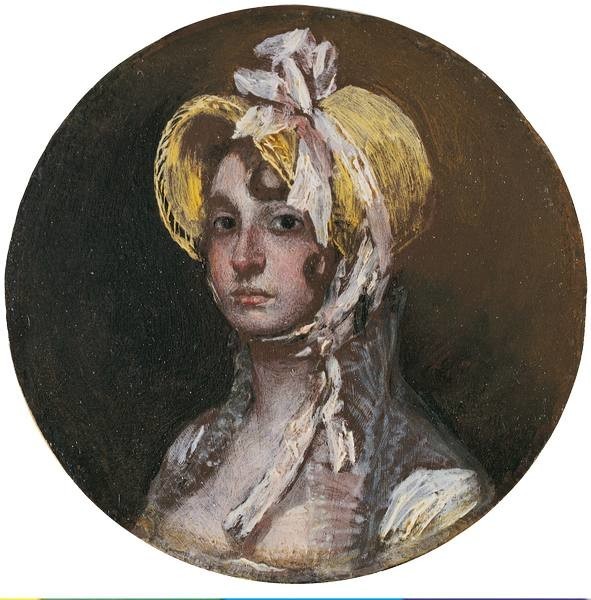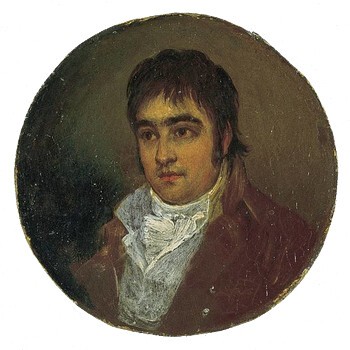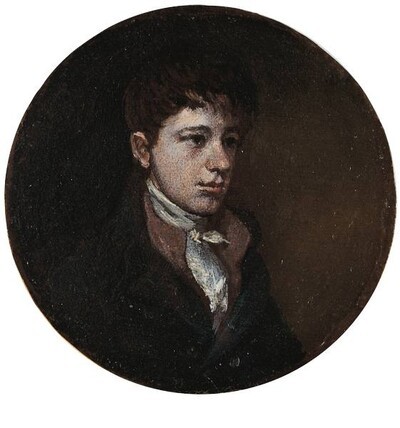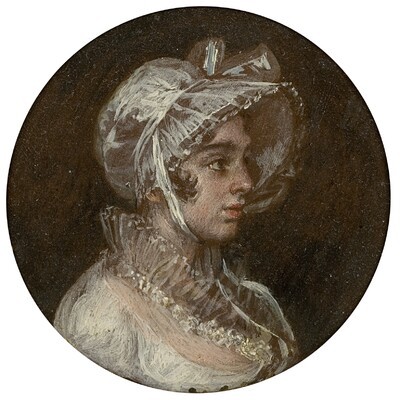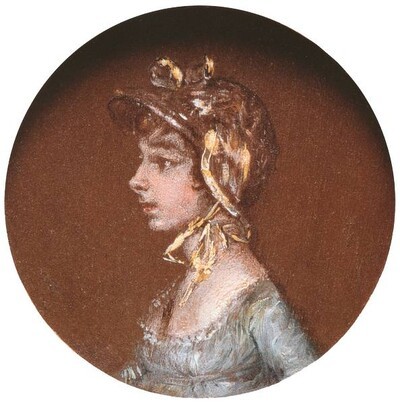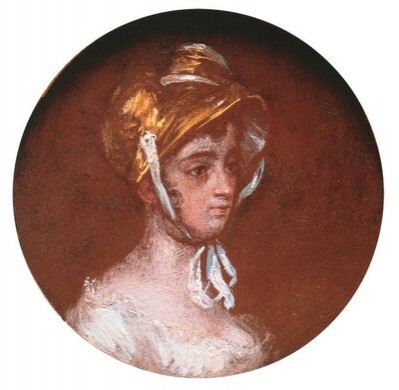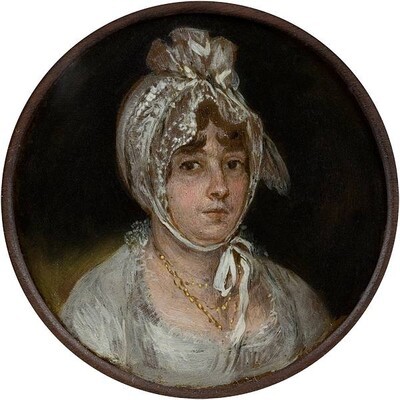- Cronología
- 1805
- Ubicación
- Museum of Zaragoza, Zaragoza, Spain
- Dimensiones
- 8 cm de diámetro
- Técnica y soporte
- Oil on copper
- Reconocimiento de la autoría de Goya
- Documented work
- Titular
- Government of Aragon
- Ficha: realización/revisión
- 23 Mar 2010 / 11 Dec 2024
- Inventario
- (97.67.2)
Goya made seven miniature portraits, all on sheets of copper and with a circular format, for the wedding of his son, Francisco Javier, to Gumersinda Goicoechea, which took place on 5 July 1805. As well as this portrait of the bride, he made ones of the parents of Gumersinda, her three sisters, and the groom and Goya's son, Javier Goya.
This portrait, of Gumersinda, has been in various collections: Alejandro Pidal, Madrid; Salas Bosch, Barcelona; Goupil collection, Paris; and Bergerat, Paris.
It was acquired by the Museum of Zaragoza in 2003.
From December 5th, 2024, and while the Zaragoza Museum remains closed for works, the painting is part of the exhibition 'Goya. From the Museum to the Palace' in the Aljafería Palace in Zaragoza.
Gumersinda Goicoechea was the wife of Javier Goya, the artist's son. Their marriage was a great cause of concern to Goya, who had to support them economically for many years. In compensation, the artist was overjoyed at the birth of the couple's son, Marianito. In this small portrait, Gumersinda, wearing a raffia hat decorated with a pink ribbon and a dress that features a slightly revealing neckline, looks straight out at the viewer. Her gaze, which does not reveal excessive happiness, is somewhat distant. Once again, Goya was able to masterly depict his psychological insight into the sitter.
In terms of the technique, Goya used the layer of reddish primer itself to create shadows that increase the sense of volume of the figure, particularly around the neck.
For more information, see Javier Goya Bayeu.
-
Goya. El Capricho y la Invención. Cuadros de gabinete, bocetos y miniaturasMuseo Nacional del PradoMadrid1993from November 18th 1993 to February 15th 1994. Exhibited also at the Royal Academy of Arts, London, March 18th to June 12th 1994 and The Art Institute of Chicago, Chicago, July 16th to October 16th 1994, consultant editors Manuela B. Mena Marqués and Juliet Wilson-Bareaucat. 70
-
Goya. La imagen de la mujerMuseo Nacional del PradoMadrid2001from October 30th 2001 to February 10th 2002. Exhibitied also at the National Gallery of Art, Washington, March 10th to June 2nd 2002, consultant editor Francisco Calvo Serrallercat. 39
-
Goya en tiempos de guerraMuseo Nacional del PradoMadrid2008consultant editor Manuela B. Mena Marqués, from April 14th to July 13th 2008cat. 44
-
Goya: The PortraitsLondon2015cat. 47
-
Goya. From the Museum to the PalaceZaragoza2024cat.125
-
Goya. Antecedentes, Coincidencias e Influencias del arte de GoyaMadridSociedad Española de Amigos del Arte1947pp. 37 y 38
-
Vie et ouvre de Francisco de GoyaParísOffice du livre1970p. 200, cat. 845
-
BarcelonaPolígrafa1970vol. I, pp. 329 y 330, cat. 506
-
Goya. El capricho y la invención. Cuadros de gabinete, bocetos y miniaturasMadridMuseo del Prado1993pp. 266, 267, 268 (il.) y 269 (il), cat.
-
Goya, la imagen de la mujerMadridMuseo Nacional del Prado y Fundación Amigos del Museo del Prado2001pp. 196 y 197 (il.), cat. 39
-
Museo de Zaragoza. GuíaZaragozaGobierno de Aragón2003pp. 348 y 349 (il.), cat. 296
-
Goya en tiempos de guerraMadridMuseo Nacional del Prado2008pp. 212, 213 (il.) y 214, cat. 44
-
LondonNational Gallery Company2015pp. 150-152
-
Goya. From the Museum to the PalaceZaragozaZitro Comunicación2024pp.124-125
